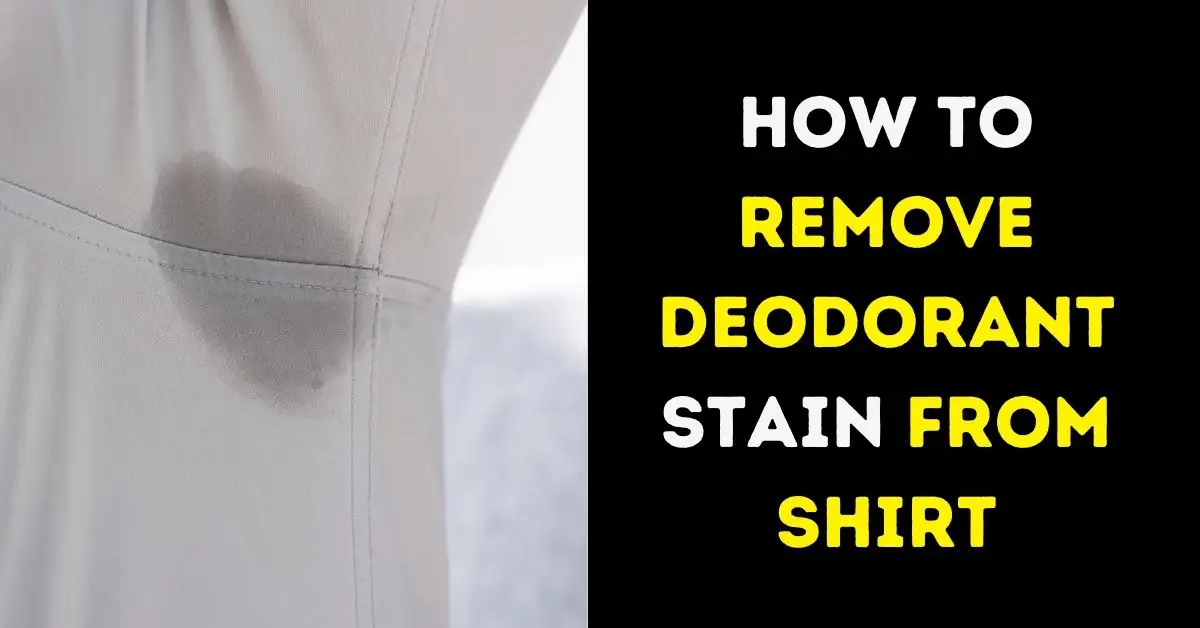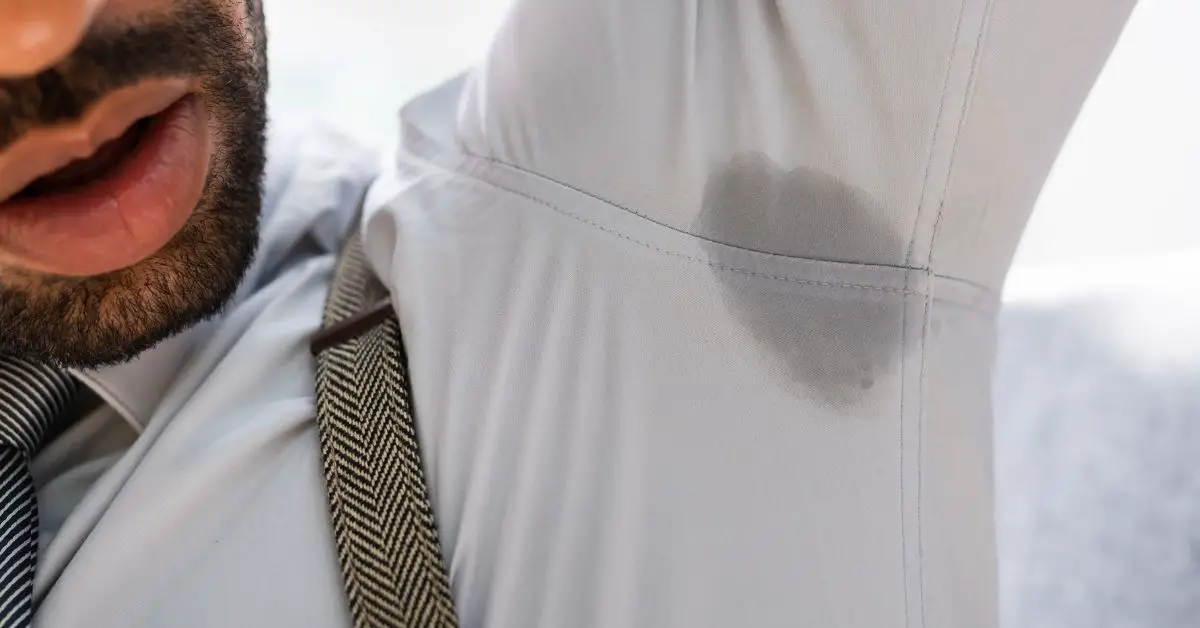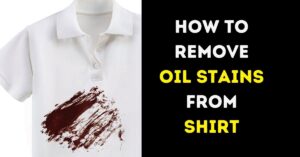
Dealing with deodorant stains can be frustrating, but fear not – I’ve got your back. In this guide, I’ll walk you through effective methods on how to remove deodorant stain from shirt? From quick fixes to expert tips, you’ll be armed with the knowledge to confidently eliminate deodorant stains and keep your wardrobe looking flawless.
Deodorant Stains: Understanding the Culprit
Deodorant stains can be a real nuisance, tarnishing your clothing and leaving you scrambling for solutions. To effectively combat these stubborn marks, it’s essential to understand their origins and the tactics to swiftly remove them. Below, I’ll be talking about the types of deodorants and the fabrics that are most vulnerable.
Types of Deodorants and Their Ingredients
Deodorants come in various forms, each with its unique composition. Understanding the ingredients can shed light on why and how these stains occur. Common types include:
- Solid Stick Deodorants: These often contain waxes, oils, and antiperspirant compounds, making them prone to leaving white streaks.
- Spray Deodorants: Aerosol-based deodorants contain alcohol and other chemicals that can react with clothing fibers, causing stains.
- Gel Deodorants: Gel formulas may include glycerin and polymers, which can adhere to fabrics and become tricky to remove.
- Roll-On Deodorants: These usually contain a liquid base and can leave wet marks that dry and form stains over time.
Common Fabrics Prone to Staining
Certain fabrics are more susceptible to deodorant stains due to their composition and texture. Fabrics like cotton, polyester, silk, and synthetic blends are often victims of these marks. The porosity of these materials can make it easier for deodorant ingredients to penetrate and create visible stains.
Removing Deodorant Stains: Household Heroes

Dealing with deodorant stains on your shirts might seem like a daunting task, but fear not! There are effective household remedies that can come to your rescue. In this section, we’ll explore some natural solutions to bid farewell to those stubborn marks and keep your shirts looking their best.
White Vinegar Solution
- Mixing and Application: Create a solution by mixing equal parts of white vinegar and water. Apply this mixture directly to the stain, ensuring it saturates the affected area.
- Gently Scrubbing the Stain: Gently scrub the stained area using a soft-bristle toothbrush or a clean cloth. This helps to break down the residue and lift it from the fabric fibers.
Baking Soda Paste
- Creating the Paste: Mix baking soda with a small amount of water to create a paste with a toothpaste-like consistency. The paste’s mild abrasive properties can help to lift the stain.
- Applying and Scrubbing: Spread the baking soda paste onto the stain and gently rub it in using circular motions. Allow it to sit for about 15 minutes before brushing away the residue with a clean cloth.
Lemon Juice Magic
- Fresh Lemon vs. Bottled Juice: Both fresh lemon juice and bottled lemon juice can work wonders. Apply a small amount directly to the stain and gently rub it in. The citric acid helps break down the stain’s components.
- Precautions for Sensitive Fabrics: Lemon juice can have a bleaching effect on fabrics, especially when exposed to sunlight. Use caution when treating colored or delicate fabrics.
Special Care for Delicate Fabrics
When dealing with delicate fabrics like silk, satin, and lace, a gentler touch is required.
- For silk, blot the stain gently with a clean cloth and consider using a specialized silk detergent for laundering.
- Satin can be treated similarly to silk, with gentle blotting and spot treatment.
- Lace fabrics should be treated delicately; avoid excessive rubbing and consider seeking professional help for stubborn stains.
Sheer and Lightweight Materials
Sheer and lightweight fabrics need extra care to prevent damage. Opt for gentle methods like blotting or using a fabric brush. If using any solutions, ensure they won’t compromise the fabric’s integrity.
Test Patch Before Treatment
Before applying any remedy, it’s wise to perform a patch test on an inconspicuous area of the fabric to ensure that the treatment won’t cause discoloration or damage.
Drying and Inspecting
When the stain has been successfully treated, it’s time to ensure proper drying:
- Choose between air drying and machine drying based on the fabric’s care instructions.
- Always inspect the treated area for residual stains before drying. If any residue remains, repeat the treatment process.
- Avoid high heat settings when drying, as they can set any remaining residue and make stain removal more challenging.
By using household remedies like white vinegar, baking soda, and lemon juice, as well as employing special care for delicate fabrics, you can effectively banish deodorant stains from your shirts and maintain their pristine appearance.
Preventive Measures: Guarding Against Deodorant Stains
While knowing how to remove deodorant stains is invaluable, prevention is the true key to maintaining your clothing’s pristine appearance. Below, I have explored a range of preventive measures that can help you bid farewell to those pesky marks and keep your shirts looking flawless.
Applying Deodorant Correctly
- Waiting for Deodorant to Dry Before Dressing: One of the most common causes of deodorant stains is rushing to put on your clothes immediately after applying deodorant. Take a moment to let the deodorant dry completely before getting dressed. This can significantly reduce the chances of transfer to your clothing.
- Using Clear or Gel-Based Deodorants: Clear or gel-based deodorants are less likely to leave visible residue on clothing. If avoiding stains is a priority, consider switching to these alternatives.
Wearing Undershirts or Protective Barriers
Wearing an undershirt or a barrier between your skin and your clothing can provide an added layer of protection against deodorant stains. Undershirts can absorb sweat and prevent direct contact between the deodorant and your outer garment, helping to minimize the risk of staining.
Laundering Shirts Properly
- Using the Right Amount of Detergent: When laundering your shirts, it’s important to use the right amount of detergent. Using too much can lead to detergent buildup, which can contribute to the formation of stains over time. Follow the detergent manufacturer’s guidelines for the appropriate dosage.
- Avoiding Overcrowded Loads: Overcrowding your washing machine can prevent proper agitation and rinsing, resulting in inadequate stain removal. Give your shirts enough space to move freely in the machine, allowing the detergent to effectively clean the fabric.
Final Thoughts
In conclusion, deodorant stains are a common problem that can be frustrating to deal with, but with the right knowledge and techniques, they can be easily removed. By understanding the types of deodorants and their ingredients, as well as the fabrics that are most vulnerable, you can effectively combat these stubborn marks. Whether you opt for quick fixes or expert tips, the methods outlined in this guide will enable you to confidently eliminate deodorant stains and keep your wardrobe looking flawless. So don’t let deodorant stains get the better of you – arm yourself with these helpful tips and tricks and get ready to tackle any stain that comes your way.






